| |

Home
|
|
|
|
Booker T. Washington High School
Teachers and Student Growth
|
|
|
“We had the children’s interests in mind, but we were
more concerned with their needs. I became very close to students
and they poured out their feelings.
We knew their interests,
but by listening to them we came to learn their needs.
I understood how to deal with our children by listening to them.
Our vision was to help children grow. We were “living democracy”
in schools and in life.” Fannie Phelps Adams,
a teacher during the Secondary School Study
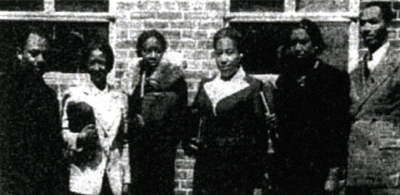
Booker T. Washington High School teachers who attended the 1941 Hampton Workshop:
John H. Whiteman, R. M. Johnson, Carrie Belle Hoover, Evelyn M. Craft, A. E. Washington, and Luther L. Wideman. As was a common and endorsed practice during the Secondary School Study, teachers would be sent to a workshop “on behalf of the entire faculty.” The secondary faculty decided to focus its professional study on the work of these teachers who attended the Hampton workshop
(Columbia teachers, 1941, p. 17).
|
|
|
|
|
|
“The students were guiding me as a teacher. Having studied under Mr. Simmons, I knew what he was like as principal and teacher. His focus was on the child. He was demanding but he inspired us to learn from the child. While the children were learning and growing, I was learning how to be a teacher without realizing that I was growing myself.
I felt myself responsible for the growth and development of children and, for that reason, I had to let their feelings come to me. If I didn’t know their feelings, I wouldn’t know how to help them.” Fannie Phelps Adams, a teacher during the Secondary School Study |
|
|
|
|
|
|
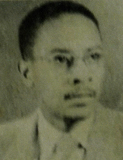 Stonewall Richburg, a teacher who came to Booker in 1946, described a common practice in the area of human relations: discussion about individual students. “Groups of teachers would come together and we would focus our discussion on an individual student, asking what we could do whenever this child comes into our classes. English, science, vocational, social studies teachers would come together in groups and would exchange experiences that we had with this student and with others. We would discuss what we did and what we could have done. We were learning from one another and we were learning about the students and about teaching.” Secondary School Study teachers attended professional development sessions with Caroline Zachry who staged these types of discussions regularly during the Eight-Year Study in what came to be known as the Zachry Seminars. The intent was primarily not to analyze students’ motives and behaviors but, rather, to allow teachers to empathize with children and to imagine ways of educating and relating to one another and to themselves. These types of sessions served as a source for the development of human relations education. Stonewall Richburg, a teacher who came to Booker in 1946, described a common practice in the area of human relations: discussion about individual students. “Groups of teachers would come together and we would focus our discussion on an individual student, asking what we could do whenever this child comes into our classes. English, science, vocational, social studies teachers would come together in groups and would exchange experiences that we had with this student and with others. We would discuss what we did and what we could have done. We were learning from one another and we were learning about the students and about teaching.” Secondary School Study teachers attended professional development sessions with Caroline Zachry who staged these types of discussions regularly during the Eight-Year Study in what came to be known as the Zachry Seminars. The intent was primarily not to analyze students’ motives and behaviors but, rather, to allow teachers to empathize with children and to imagine ways of educating and relating to one another and to themselves. These types of sessions served as a source for the development of human relations education.
|
|
|
|
|
|
|
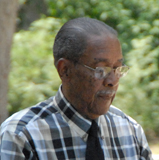
“There was an emphasis upon professional development. I was learning from the Booker T. Washington teachers. We knew that we had a responsibility and we stressed “learned who you are.” Self-analysis was a way of life. The teachers watched themselves carefully—they knew themselves and they knew the students.” Stonewall Richburg, a teacher during the Secondary School Study |
|
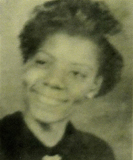
“We worked with the child and used the vocations as a way to develop the individual. Careers and vocations were the same—they were not viewed as trades. Everyone had the opportunity to have careers.” Fannie Phelps Adams, a teacher during the Secondary School Study |
|
|
|
|
|
|
|
|
|
|
|
|
|
|
|
|
|
|
|
|
|
|
|
|
|
|
|
|
|
|
|
|

return to
Booker T. Washington, High School, SC
|
|
|
|
|
|
|
|
|
|
|
|
|
|
|
|
|
|


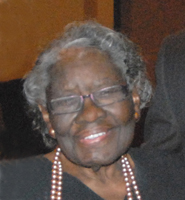



 Stonewall Richburg, a teacher who came to Booker in 1946, described a common practice in the area of human relations: discussion about individual students. “Groups of teachers would come together and we would focus our discussion on an individual student, asking what we could do whenever this child comes into our classes. English, science, vocational, social studies teachers would come together in groups and would exchange experiences that we had with this student and with others. We would discuss what we did and what we could have done. We were learning from one another and we were learning about the students and about teaching.” Secondary School Study teachers attended professional development sessions with Caroline Zachry who staged these types of discussions regularly during the Eight-Year Study in what came to be known as the Zachry Seminars. The intent was primarily not to analyze students’ motives and behaviors but, rather, to allow teachers to empathize with children and to imagine ways of educating and relating to one another and to themselves. These types of sessions served as a source for the development of human relations education.
Stonewall Richburg, a teacher who came to Booker in 1946, described a common practice in the area of human relations: discussion about individual students. “Groups of teachers would come together and we would focus our discussion on an individual student, asking what we could do whenever this child comes into our classes. English, science, vocational, social studies teachers would come together in groups and would exchange experiences that we had with this student and with others. We would discuss what we did and what we could have done. We were learning from one another and we were learning about the students and about teaching.” Secondary School Study teachers attended professional development sessions with Caroline Zachry who staged these types of discussions regularly during the Eight-Year Study in what came to be known as the Zachry Seminars. The intent was primarily not to analyze students’ motives and behaviors but, rather, to allow teachers to empathize with children and to imagine ways of educating and relating to one another and to themselves. These types of sessions served as a source for the development of human relations education.

